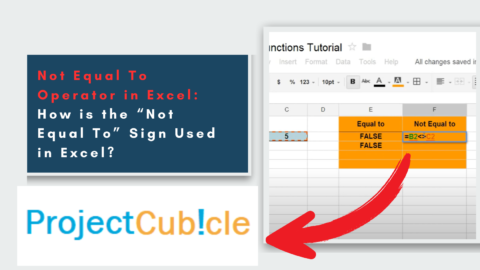How to Easily Apply Excel Alternate Row Color
Excel is a powerful tool that helps you manage and organize data, but sometimes, working with a large amount of information can be overwhelming. One way to improve the readability and organization of your spreadsheet is by applying Excel Alternate Row Color. This simple technique can make a big difference in your spreadsheet’s visual appeal and usability.
Table of Contents
In this article, we will guide you through applying Excel Alternate Row Color to your spreadsheet, step by step. We will also answer frequently asked questions and share tips and tricks to help you make the most of this feature.
What is Excel Alternate Row Color?
Excel Alternate Row Color is a formatting technique that allows you to apply a different color to every other row in your spreadsheet. This makes reading and following the data easier, especially when dealing with large amounts of information.
By default, Excel applies a white background to all cells in a spreadsheet. This can make distinguishing between rows and columns difficult, especially if they contain similar information. You can make your spreadsheet more visually appealing and organized using Excel Alternate Row Color.
How to Apply Excel Alternate Row Color
Applying Excel Alternate Row Color is a simple process that can be done in just a few steps. Here’s how:
- Select the range of cells that you want to format. You can do this by clicking and dragging your mouse over the cells or by clicking on the first cell and holding down the Shift key while selecting the last cell.
- Go to the Home tab in the Excel ribbon and click on the Conditional Formatting button.
- From the drop-down menu, select New Rule.
- In the New Formatting Rule dialog box, select Use a Formula to determine which cells to format.
- In the Format values where this formula is true field, enter the following formula: =MOD(ROW(),2)=0
- Click on the Format button to choose the formatting options for the alternate rows. You can select a background color, font style, and other formatting options.
- Click OK to apply the formatting to the selected cells.
Congratulations! You have successfully applied Excel Alternate Row Color to your spreadsheet. You can now see that every other row has a different background color, which makes it easier to read and follow the data.
How to Easily Apply Excel Alternate Row Color to Your Spreadsheet
To apply alternate row color to your spreadsheet, follow these simple steps:
- Open the spreadsheet that you want to apply the formatting to.
- Click on the first cell in the first row of your spreadsheet.
- Click on the “Conditional Formatting” button in the “Styles” group of the “Home” tab.
- Select “New Rule” from the drop-down menu.
- In the “New Formatting Rule” dialog box, select “Use a formula to determine which cells to format”.
- In the “Format values where this formula is true” field, enter the following formula:=MOD(ROW(),2)=1
- Click on the “Format” button to open the “Format Cells” dialog box.
- In the “Fill” tab, choose the color you want to use for the formatting.
- Click “OK” to close the “Format Cells” dialog box.
- Click “OK” to close the “New Formatting Rule” dialog box.
That’s it! You should now see alternate row colors in your spreadsheet.
Why Should You Use Alternate Row Colors in Your Spreadsheet?
Applying alternate row colors to your spreadsheet can provide several benefits:
- Makes it easier to read: By applying alternate row colors, you can make it easier to read your spreadsheet. The colors help to differentiate rows and make it easier to follow data across the sheet.
- Reduces errors: When working with a large spreadsheet, losing track of where you are can be easy. Applying alternate row colors can help to reduce errors by making it easier to identify which row you are working on.
- Improves aesthetics: Let’s face it, spreadsheets aren’t always the most visually appealing things. Applying alternate row colors can help to make your spreadsheet more visually appealing and easier on the eyes.
Tips and Tricks for Using Excel Alternate Row Color
Here are some tips and tricks to help you make the most of Color:
- Use a light color for the alternate rows, such as light gray or light blue. This will make the text in the cells easier to read.
- Avoid using too many colors or bright colors, as they can be distracting and make the spreadsheet difficult to read.
- Apply the Excel Alternate Row Color to the worksheet, not just a specific range of cells. This will make the spreadsheet more consistent and easier to navigate.
- Use the Format Painter tool to apply the Excel Alternate Row Color to other worksheets or workbooks.
- Experiment with different formatting options, such as font style, font color, and border styles, to find the best combination for your spreadsheet.
Conclusion
Excel Alternate Row Color is a simple yet effective way to improve the readability and organization of your spreadsheet. By applying alternate row colors, you can make your spreadsheet easier to read and follow, especially when dealing with large amounts of data. With the tips and tricks shared in this article, you can take your Excel skills to the next level and create professional-looking spreadsheets in no time.
Thank you for reading this article on Excel Alternate Row Color. We hope you found it informative and helpful in improving your Excel skills. Following the steps and tips in this article, you can easily apply alternate row colors to your spreadsheets, making them more visually appealing and easier to read.
Hello, I’m Cansu, a professional dedicated to creating Excel tutorials, specifically catering to the needs of B2B professionals. With a passion for data analysis and a deep understanding of Microsoft Excel, I have built a reputation for providing comprehensive and user-friendly tutorials that empower businesses to harness the full potential of this powerful software.
I have always been fascinated by the intricate world of numbers and the ability of Excel to transform raw data into meaningful insights. Throughout my career, I have honed my data manipulation, visualization, and automation skills, enabling me to streamline complex processes and drive efficiency in various industries.
As a B2B specialist, I recognize the unique challenges that professionals face when managing and analyzing large volumes of data. With this understanding, I create tutorials tailored to businesses’ specific needs, offering practical solutions to enhance productivity, improve decision-making, and optimize workflows.
My tutorials cover various topics, including advanced formulas and functions, data modeling, pivot tables, macros, and data visualization techniques. I strive to explain complex concepts in a clear and accessible manner, ensuring that even those with limited Excel experience can grasp the concepts and apply them effectively in their work.
In addition to my tutorial work, I actively engage with the Excel community through workshops, webinars, and online forums. I believe in the power of knowledge sharing and collaborative learning, and I am committed to helping professionals unlock their full potential by mastering Excel.
With a strong track record of success and a growing community of satisfied learners, I continue to expand my repertoire of Excel tutorials, keeping up with the latest advancements and features in the software. I aim to empower businesses with the skills and tools they need to thrive in today’s data-driven world.
Suppose you are a B2B professional looking to enhance your Excel skills or a business seeking to improve data management practices. In that case, I invite you to join me on this journey of exploration and mastery. Let’s unlock the true potential of Excel together!
https://www.linkedin.com/in/cansuaydinim/








![How to Calculate Percentage in Excel [With Examples and Detailed Instructions PDF]](https://www.projectcubicle.com/wp-content/uploads/2022/09/How-to-Calculate-Percentage-in-Excel-With-Examples-and-Detailed-Instructions-PDF-480x270.png)

